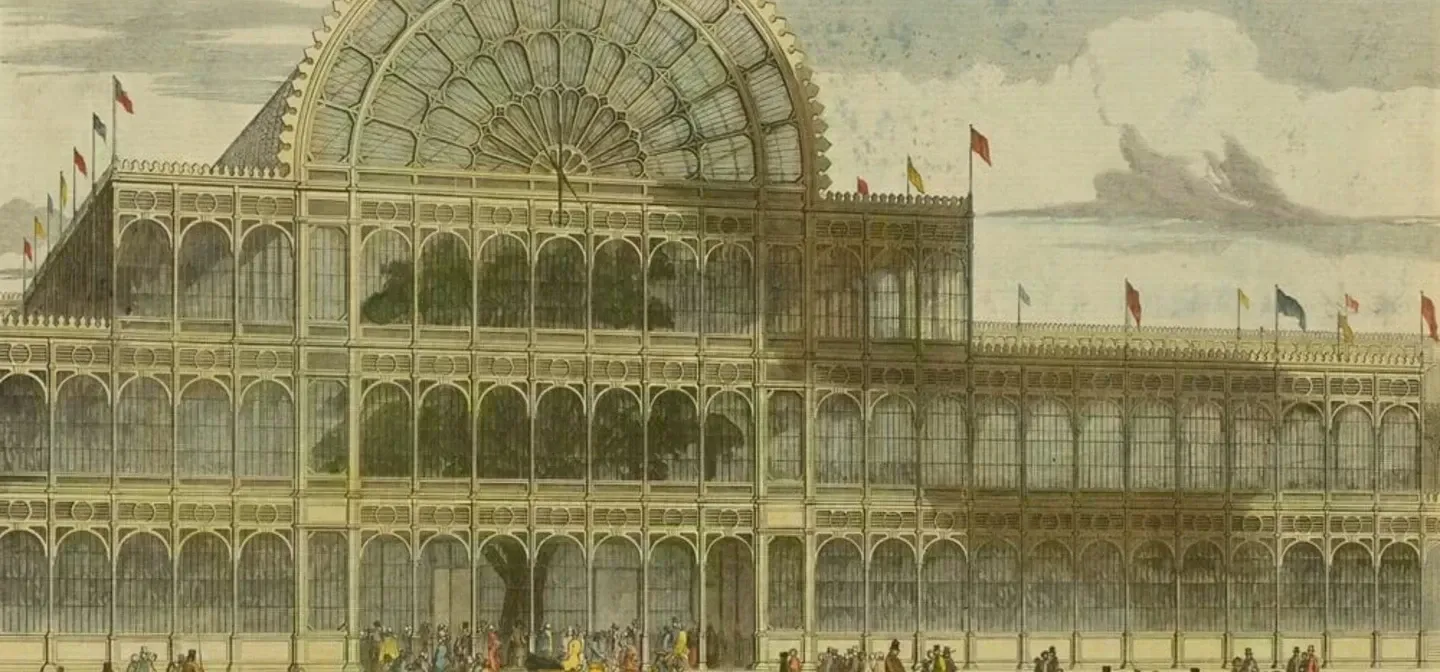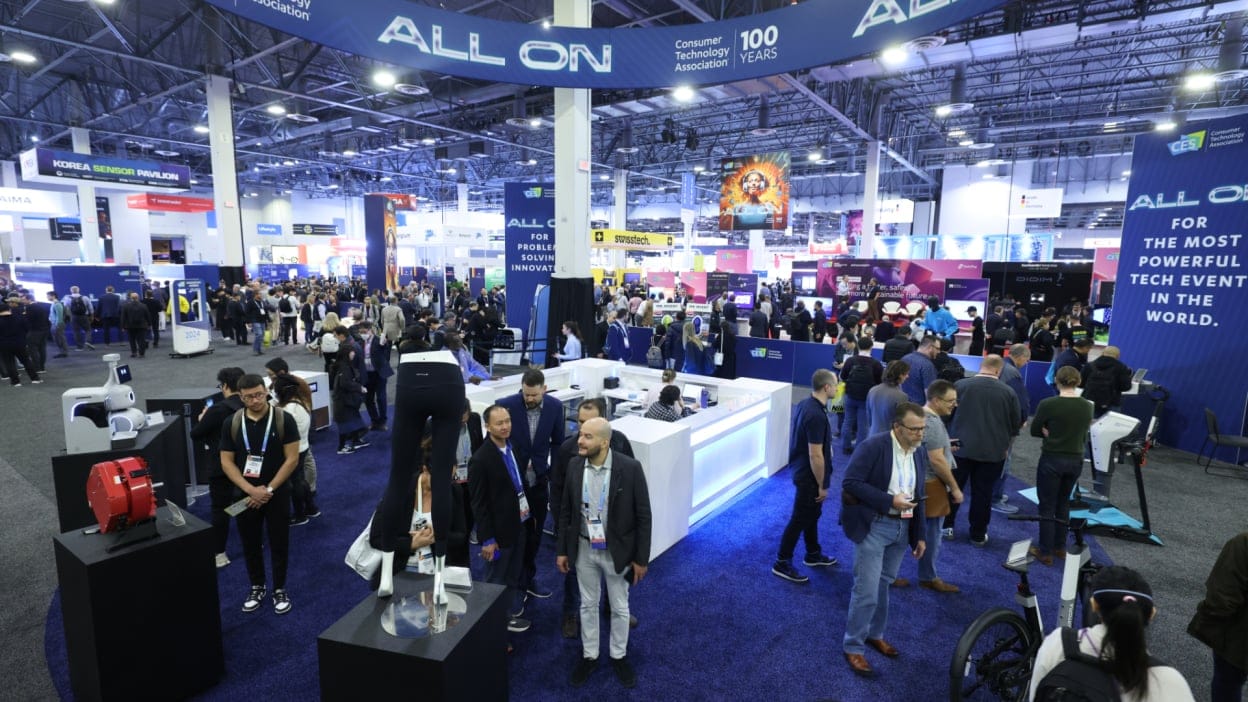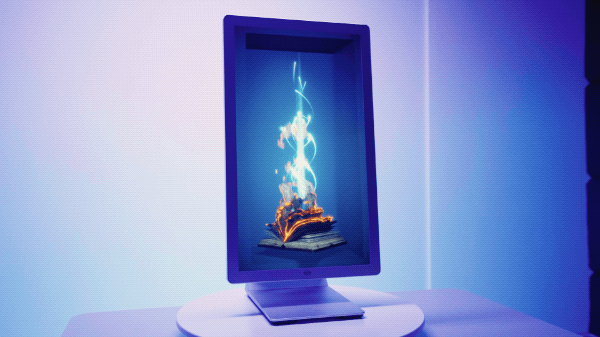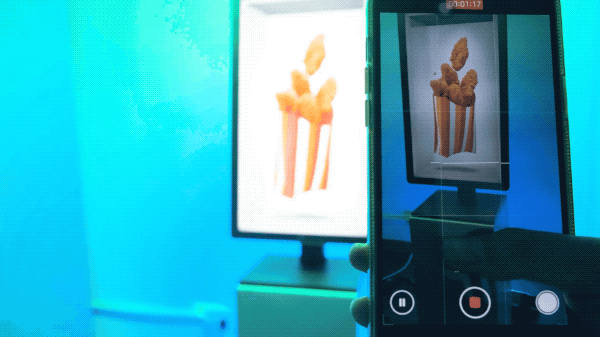From World’s Fairs to Holograms: A Short History of Trade Shows — and Why Wonder Still Wins on the Floor

Trade shows have always been about two things: commerce and awe.
Long before LED walls and branded booths, world’s fairs and industrial expositions taught us that progress needed to be seen to be believed. Every generation since has found new ways to stage that spectacle, turning innovation into real world applications.
Even now, as marketing migrates online, the power of in-person wonder endures. The reason isn’t nostalgia. It’s neurology. It doesn't seem like offline experiences are going away anytime soon.
The original trade show was a spectacle
The first modern trade show, the Great Exhibition of 1851 in London’s Crystal Palace, drew over six million visitors to marvel at glass, steam, and steel.
In that moment, display became theater: the act of showing technology was as important as the technology itself.
Subsequent world’s fairs throughout the 19th and 20th centuries followed the same formula — part innovation showcase, part cultural performance. The Chicago World’s Fair (1893) electrified audiences (literally) with massive light displays. The New York World’s Fair (1939) introduced Futurama, streamlined appliances, and a vision of “The World of Tomorrow.”
Each of these events wasn’t just selling products — they were selling progress.
(I can't help another Disney reference, I'm an unapologetic Disney fangirl)
They proved that the best way to make people believe in the future was to let them stand inside it.
From World's Fair to trade fairs
By the mid-20th century, the grand exposition had evolved into the professional trade show — smaller, specialized, but still theatrical. The newly founded Consumer Electronics Show (CES) in 1967 carried the same DNA: stage the new, dramatize its promise, and make it real in front of an audience.

Every decade had its icons:
- 1970s: home VCRs and personal stereos.
- 1980s: IBM PCs and Walkmans.
- 2000s: flat screens, drones, and VR headsets.
Each era brought its own kind of magic — but the ritual stayed the same.
No matter how digital the world became, people still gathered around the new thing that moved or glowed or surprised them, in person.
Why wonder just works
Trade shows are attention markets — and attention thrives on novelty.
Psychologists describe this as the orienting response — our brain’s automatic reaction to something unexpected or emotionally relevant. When surprise and familiarity coexist, we get a prediction error: the gap between what we expect and what we see. The brain flags it as important, dopamine flows, and curiosity follows.
That’s why booths that evoke awe or delight outperform those that merely inform.
Brightness may draw the eye, but depth and story hold it.
Wonder isn’t fluff — it’s the biological root of attention.
Lessons from attractions
Theme parks have perfected what trade shows try to do in miniature: build anticipation, reveal something impossible, and make it believable.
Like I first mentioned What the Magic Problem Teaches Us About Attention, The Enchanted Tale of Beauty and the Beast ride at Tokyo Disneyland is a masterclass in embodied storytelling. Riders glide through moving scenes lit by volumetric projection — a blend of physical sets and illusion that convinces the brain it’s standing inside a story.

Immersive attractions like Meow Wolf’s Convergence Station or TeamLab Borderless in Tokyo use similar principles: synchronized motion, spatial light, and surprise timing to elicit curiosity and joy.
Trade shows might operate at smaller scale, but the same mechanics apply. The most memorable booths are miniaturized theme parks — a stage, a reveal, and a reason to believe.
From spectacle to substance: the modern booth
Today’s exhibitors face an inversion of the world’s fair challenge: how to deliver wonder without waste or overproduction. In an era of endless content and shorter attention spans, the challenge isn’t drawing a crowd — it’s holding one.
That’s where dimensional display technology like the Looking Glass Hololuminescent Display (HLD) comes in.

HLD systems make light itself the medium — transforming existing 2D content into spatial, living visuals that can stop attendees mid-stride. No headsets, no apps, no gimmicks. Simply an experience that feels alive.
For brands, this means you can achieve the emotional punch of a world’s fair moment without, thankfully, a world’s fair budget.
Why it still works
Despite new tech, the underlying reason people attend trade shows hasn’t changed much in 150 years: to see what’s next — and to feel it before anyone else does.

In-person demonstrations create trust, memory, and belief in a way pixels on a screen can’t. And when that experience carries even a trace of wonder — a small moment that makes you lean in — it does what the Crystal Palace did, what the 1939 Futurama did, what CES still tries to do every year:
It makes the future feel close enough to touch.
Where to go from here
If you made it this far, you’re HLD-curious (at least), skim the HLD overview to see sizes, use cases, and basics. Are you going to a trade show in the near future and want some help deploying content for the HLD? We got you. Write us at future [at] lookingglassfactory.com to see how we can help.
See you in the next dimension — to the future :)
